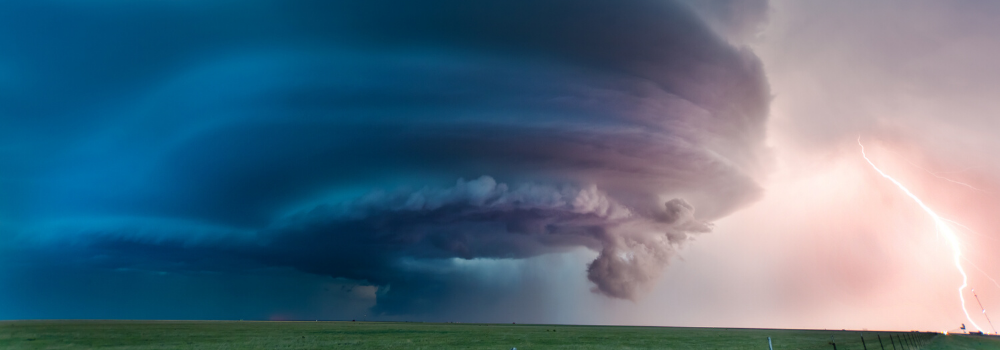
Tornado Preparedness
If you have seen movies like: Into the Storm, Twister, Metal Tornado, and Storm Chasers, then you are likely familiar with tornadoes. Tornadoes are violent storms. They are a rotating column of air capable of reaching 250 miles per hour.
Generally, the most common regions in the US to experience tornadoes are the southern plains, gulf coast, northern plains, and upper Midwest. The United States experiences the most tornadoes of any other country; 1,200 or so per year.
Identifying When a Tornado is Coming
A few signs to look out for regarding tornado warnings:
- Olive/dark green skies
- Big sized hail
- Dark, rotating, low-altitude cloud
- Loud roaring like thunder
Other sources to look into for warnings- if access is available: meteorologists, weather apps, and tornado apps.
Planning for a Tornado and the Aftermath
Ready.gov recommends the following for tornado planning:
- Know your area’s tornado risk.
- Know the signs of a tornado- as mentioned above.
- Sign up for the community warning system; The Emergency Alert System (EAS) and National Oceanic, Atmospheric Administration (NOAA), and Weather Radio provide tornado/emergency alerts.
- Tune in to Meteorologists who can predict when conditions might be right for a tornado.
- Identify a safe shelter in the event of high winds: a small interior- a windowless room on the lowest level of a sturdy building.
As for what happens after the tornado, Ready.gov says:
- Continue to listen to EAS, NOAA, Weather Radio, and local Meteorologists for updated information.
- If you are trapped, cover your mouth with a cloth or mask to avoid breathing dust. Try to send a text, bang on a pipe or wall, or use a whistle instead of shouting.
- Stay clear of fallen power lines or broken utility lines.
- Do not enter damaged buildings until you are told that they are safe.
- Save your phone calls for emergencies. Phone systems are often down or busy after a disaster.
- Use text messaging or social media to communicate with family and friends.
Preparing for an Insurance Claim
As soon as you can- contact your insurance agent/insurance company. Photos of the damage are extremely important. If you are able to make temporary repairs- it’s a good idea to do so (make sure to save all receipts/documentation). A detailed list of damages and personal property destroyed will go a long way.
In Closing
A popular tool: Know Your Plan™– is an award-winning app that helps you, your family, and even your pets prepare to safely get out of harm’s way before trouble starts. The app is available for download on Android devices.
Are you adequately covered? It may be a good idea to contact your insurance agent/company to discuss.
